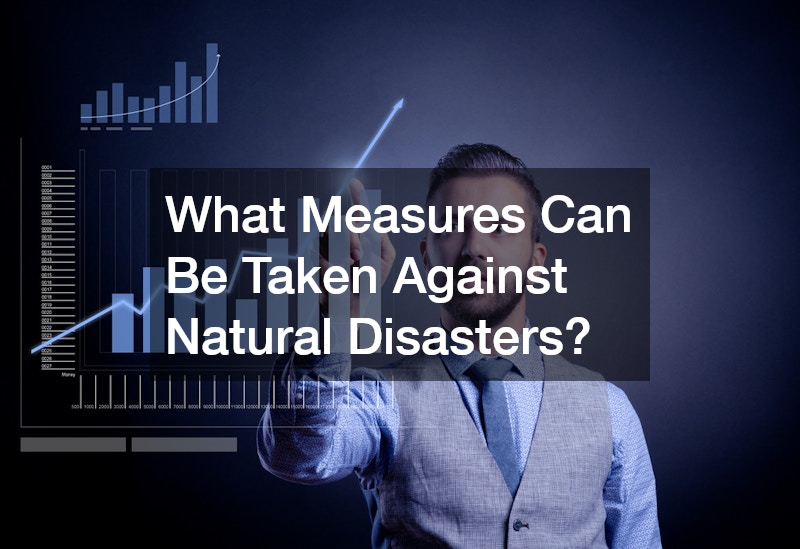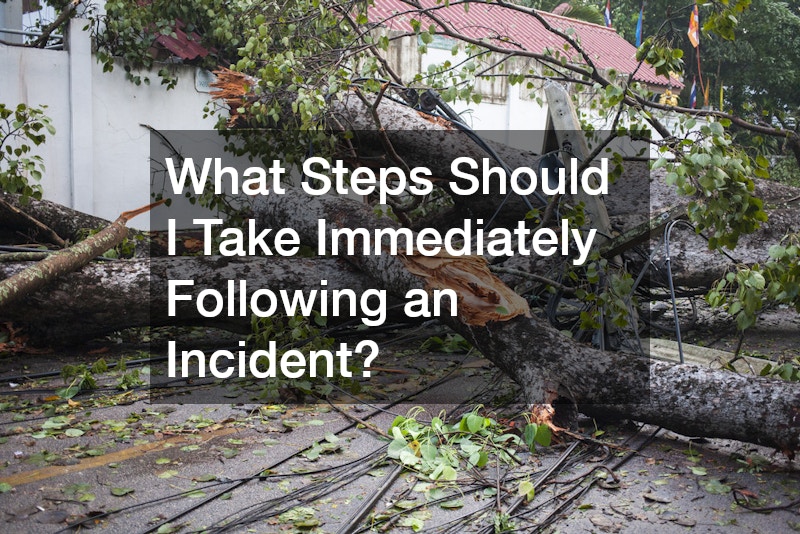
Businesses face a wide range of threats that can disrupt operations, cause financial losses, and damage their reputation. Vandalism and natural disasters are among the most concerning, as they often strike without warning and can lead to significant structural and financial damage. Understanding these risks and implementing effective strategies to protect your commercial property is essential for long-term success. This article provides a comprehensive guide on safeguarding your business, highlighting practical measures, technology solutions, and professional services that can reduce vulnerability and ensure continuity.
What Are the Potential Threats to My Business?
Identifying Types of Vandalism
Vandalism can include graffiti, broken windows, tampering with outdoor electronic signs, or other forms of property defacement. Commercial properties are often targets due to high visibility or valuable equipment. Recognizing the types of vandalism that are most likely in your area can help in designing preventive measures, such as reinforced entry points or surveillance cameras.
Assessing Risks from Natural Disasters
Natural disasters like floods, hurricanes, tornadoes, and fires can cause major disruptions. Stormwater management is essential for businesses in flood-prone areas to prevent water from accumulating and damaging structures. Implementing proper drainage systems and using landscaping features such as retaining walls can reduce the impact of heavy rains. Understanding local weather patterns and seasonal threats allows businesses to prepare and mitigate damage effectively.
Evaluating Business Location Vulnerabilities
Location significantly affects vulnerability to both vandalism and natural disasters. Commercial construction in low-lying areas may require flood mitigation measures, while properties in high-traffic zones could be more susceptible to break-ins or vandalism. Assessing the surrounding environment, including nearby construction, road traffic, and community safety, informs strategic planning to protect assets.
Understanding Industry-Specific Risks
Different industries face unique challenges. For example, offices with large glass installations, such as bi folding windows, may need additional protective measures against break-ins or severe weather. Retail businesses often contend with vandalism targeting outdoor electronic signs or storefronts. Manufacturing facilities may face equipment damage risks from storms or unauthorized access. Recognizing these nuances helps businesses implement industry-appropriate security and disaster prevention strategies.
Analyzing Previous Incidents and Data
Reviewing past incidents, insurance claims, and local data on vandalism and natural disasters can help identify patterns and high-risk periods. Businesses that analyze historical flood or fire events, as well as incidents requiring water damage service, can proactively reinforce vulnerable areas and ensure readiness for recurring threats.
How Can I Protect My Business from Vandalism?

Implementing Security Systems
Comprehensive security systems can deter vandalism and reduce losses. Access control systems, motion detectors, and alarms provide immediate alerts to unauthorized activity. Businesses investing in commercial construction or high-value equipment, including outdoor electronic signs, benefit from layered security to protect both property and investment.
Installing Surveillance Cameras
Strategically placed surveillance cameras monitor entrances, perimeters, and vulnerable areas. Modern systems can integrate with mobile devices, allowing business owners to respond quickly to suspicious activity. This is especially useful for monitoring assets like bi folding windows or commercial building backup generators, which may attract targeted vandalism.
Strengthening Physical Barriers
Physical barriers such as reinforced doors, shatterproof windows, and fences protect commercial properties from intrusion and damage. Retaining walls can also provide structural support while enhancing security, particularly in properties located on sloped terrain. These measures are critical in preventing both vandalism and damage during severe weather events.
Developing a Response Plan
A structured response plan ensures that employees know how to react in the event of vandalism. Procedures should include contacting authorities, documenting incidents, and securing key assets like outdoor electronic signs and commercial plywood supply storage areas. Clear plans reduce confusion and help mitigate potential losses.
Collaborating with Local Law Enforcement
Building relationships with local authorities improves response times and enhances prevention efforts. Law enforcement can provide guidance on securing high-risk areas, patrol recommendations, and programs that address vandalism trends in commercial zones.
What Measures Can Be Taken Against Natural Disasters?

Creating a Disaster Preparedness Plan
Disaster preparedness plans should outline procedures for floods, fires, storms, and other emergencies. For businesses in flood-prone areas, stormwater management plans and installation of retention systems such as retaining walls can prevent extensive water damage. Plans should also identify safe storage for critical assets like commercial plywood supply and equipment.
Securing Critical Business Infrastructure
Protecting critical infrastructure, including commercial building backup generators, electrical systems, and communication networks, is essential. These systems ensure continuity during disasters and reduce downtime. Installing backup power sources and elevating sensitive equipment above flood levels are practical measures for minimizing operational disruption.
Employee Training and Drills
Regular training educates employees on emergency procedures and the use of protective equipment. Drills simulate real scenarios such as fires or floods, ensuring staff can safely evacuate and respond appropriately. Employees should also be trained on maintaining safety around key assets, such as bi folding windows or outdoor electronic signs, during emergencies.
Investing in Adequate Insurance
Insurance coverage is vital for recovery from natural disasters. Policies that cover flood and fire damage restoration, water damage service, and business interruption protect against unexpected costs. Reviewing policies to ensure coverage aligns with regional risks safeguards commercial operations and assets.
Utilizing Technology for Early Warning Systems
Technology provides early alerts for severe weather and emergencies. Real-time monitoring systems for storms, floods, and fires allow businesses to activate protective measures quickly, such as deploying commercial building backup generators or securing commercial plywood supply. Early intervention minimizes damages and protects employees and property.
How Do I Create an Effective Emergency Response Plan?
Planning for Various Scenarios
An emergency response plan should account for fires, floods, storms, and vandalism. Each scenario must include detailed procedures, responsibilities, and resource allocation. Integrating preventive measures such as stormwater management or retaining walls enhances the effectiveness of the plan.
Communication Strategies During Emergencies
Clear communication ensures coordination during emergencies. Establishing protocols for contacting employees, customers, and stakeholders prevents confusion. Tools such as mobile alerts and cloud-based communication platforms enable timely updates and improve decision-making during critical events.
Evacuation Routes and Assembly Points
Designated evacuation routes and assembly points protect employees during disasters. Routes should be clearly marked and accessible, considering both structural vulnerabilities and natural hazard zones. Safe assembly areas ensure accountability and streamline post-incident evaluations.
Engaging with Professional Emergency Services
Collaborating with fire departments, medical teams, and local emergency plumbers ensures rapid response during incidents. Emergency professionals provide technical support, assist with immediate repairs, and help minimize damages caused by floods, fires, or structural failures.
Reviewing and Updating the Plan Regularly
Emergency response plans must evolve with changing business operations, building modifications, and local risk factors. Periodic reviews and drills ensure the plan remains practical, efficient, and comprehensive for protecting assets such as commercial plywood supply, outdoor electronic signs, and commercial building backup generators.
What Role Does Insurance Play in Protection?

Types of Insurance Policies
Insurance policies covering flood and fire damage restoration, water damage service, liability, and business interruption are essential. Policies tailored to commercial construction and high-value assets, including bi folding windows and outdoor electronic signs, protect against financial losses from unexpected events.
Assessing Coverage Needs
Evaluating the value of physical assets, inventory, and critical systems helps determine adequate coverage. Businesses in areas prone to storms or floods should prioritize coverage that aligns with their risk exposure, ensuring comprehensive protection.
Understanding Policy Exclusions
Insurance exclusions can limit coverage for specific incidents, making it essential to review policies thoroughly. Understanding these limitations helps businesses implement supplementary protective measures, such as retaining walls or stormwater management systems, to mitigate uncovered risks.
Filing Claims After an Incident
Timely and accurate claim submission is critical for financial recovery. Proper documentation, including photographs of damages and maintenance records for items such as commercial plywood supply or commercial building backup generators, facilitates efficient processing.
Reviewing and Adjusting Coverage Periodically
As businesses expand or renovate, insurance needs change. Regularly reviewing and updating policies ensures continued protection, particularly for assets like bi folding windows, outdoor electronic signs, or commercial construction projects.
How Can Technology Help in Preventing Incidents?
Smart Surveillance Technologies
AI-enabled cameras and motion detection systems identify suspicious activity in real-time. These systems are especially effective for monitoring critical areas such as commercial plywood storage, outdoor electronic signs, and commercial building entrances.
Utilizing Mobile Security Apps
Mobile apps allow business owners to monitor security systems remotely, control alarms, and receive alerts. Access to live feeds and notifications enhances proactive measures against vandalism and property damage.
Cloud-Based Monitoring Systems
Cloud storage protects security footage from damage or tampering, ensuring a reliable record of incidents. This is crucial for insurance claims and investigations following vandalism, floods, or fires.
Integrating IoT Devices for Security
IoT devices, including smart locks and environmental sensors, provide real-time monitoring and automated responses. Integration of these devices improves disaster resilience and security around high-risk assets like bi folding windows or outdoor electronic signs.
Analyzing Data for Predictive Insights
Security and environmental data can be analyzed to identify patterns and predict potential threats. Insights gained allow businesses to optimize stormwater management, reinforce retaining walls, and proactively deploy commercial building backup generators during critical events.
What Should Be Included in a Security Audit?
Evaluating Physical Security Measures
Audits should examine entry points, windows, fences, and storage areas, including commercial plywood supply and outdoor electronic signs. Assessing these areas identifies weaknesses that could be exploited by vandals or exacerbated during natural disasters.
Checking Digital Security Protocols
Cybersecurity audits protect sensitive business data and ensure communication systems remain operational during crises. Evaluating firewalls, cloud storage systems, and access control protocols is essential.
Identifying Vulnerabilities
Audits highlight structural, procedural, and technological vulnerabilities. Recognizing areas at risk, such as retaining walls prone to erosion or bi folding window installations that may fail under severe storms, allows for targeted improvements.
Recommendations for Improvement
Audit reports provide actionable suggestions, from upgrading surveillance systems to enhancing stormwater management. Implementing these recommendations strengthens overall resilience and security.
Frequency and Follow-Up of Audits
Regular audits and follow-ups maintain a high level of preparedness. Businesses should schedule annual or semi-annual audits, particularly after renovations or natural disasters, to ensure ongoing protection.
How Can Community Engagement Enhance Security?
Building Relationships with Local Organizations
Collaborating with business associations and civic groups fosters shared knowledge and collective security initiatives. Local organizations may provide guidance on stormwater management, flood mitigation, and best practices in commercial construction.
Participating in Neighborhood Watch Programs
Neighborhood watch programs enhance community vigilance. Participation ensures early alerts for vandalism and suspicious activity near commercial properties and helps safeguard assets like outdoor electronic signs or commercial plywood supply.
Hosting Safety Workshops for the Community
Educational workshops on safety, emergency preparedness, and disaster mitigation promote awareness. These events can cover topics like commercial building backup generators, stormwater management, and fire prevention strategies.
Sharing Information and Alerts
Timely communication with neighboring businesses and local authorities ensures rapid dissemination of alerts regarding natural disasters or criminal activity. Shared knowledge improves overall preparedness and response.
Leveraging Community Resources and Networks
Community resources, such as volunteer emergency response teams and local emergency plumbers, provide additional support during incidents. Leveraging these networks enhances safety and recovery efforts following water damage service needs or flood and fire damage restoration.
How Important Is Employee Training in Incident Prevention?
Developing a Comprehensive Training Program
Employee training programs should cover emergency procedures, security protocols, and equipment handling. This includes training on maintaining bi folding windows, operating outdoor electronic signs safely, and responding to floods or fires.
Conducting Regular Safety Drills
Drills simulate real-world emergencies, reinforcing employee knowledge and coordination. Practicing evacuation, securing commercial plywood supply, or using commercial building backup generators ensures preparedness for actual incidents.
Educating Employees on Security Protocols
Employees must understand responsibilities for access control, monitoring, and emergency response. Education helps prevent lapses that could lead to vandalism or exacerbate natural disaster impacts.
Encouraging Reporting of Suspicious Activities
A culture that encourages reporting unusual behavior or potential hazards helps detect threats early. Prompt reporting minimizes damage and improves response times for water damage service or flood and fire damage restoration.
Rewarding Proactive Safety Measures
Recognizing employees who take proactive safety actions, such as reinforcing stormwater management areas or monitoring outdoor electronic signs, fosters a culture of accountability and vigilance.
What Steps Should I Take Immediately Following an Incident?

Contacting Local Authorities
After vandalism or natural disaster damage, contact local authorities, including police or fire departments, to secure the scene and provide documentation. For plumbing or water-related emergencies, involving a local emergency plumber ensures rapid mitigation.
Securing the Premises
Boarding up bi folding windows, reinforcing retaining walls, and restricting access to hazardous areas protect property and personnel. Securing outdoor electronic signs and commercial plywood supply prevents further loss.
Assessing Damages and Losses
Thoroughly assess structural, inventory, and equipment damages. Documenting damage supports insurance claims and identifies immediate repair priorities, including flood and fire damage restoration or water damage service needs.
Communicating with Stakeholders
Keep employees, customers, and suppliers informed about the incident and recovery efforts. Clear communication maintains trust and allows stakeholders to plan accordingly.
Reviewing and Enhancing Security Measures
Post-incident analysis identifies weaknesses in security, infrastructure, and emergency planning. Improvements may include additional stormwater management measures, reinforced retaining walls, or upgraded commercial building backup generators.
Closing Thoughts
Proactively protecting your business from vandalism and natural disasters is critical to maintaining operations and safeguarding assets. Implementing preventive strategies, leveraging technology, and investing in disaster mitigation measures such as stormwater management, retaining walls, and commercial building backup generators reduces risk. Collaborating with professionals, including local emergency plumbers, and engaging the community further strengthens protection. By combining preparedness, training, and insurance, businesses can ensure resilience, minimize damage, and recover efficiently from unexpected events.
